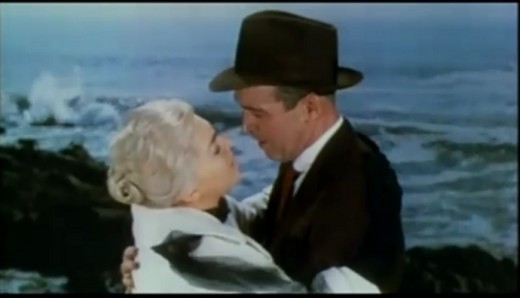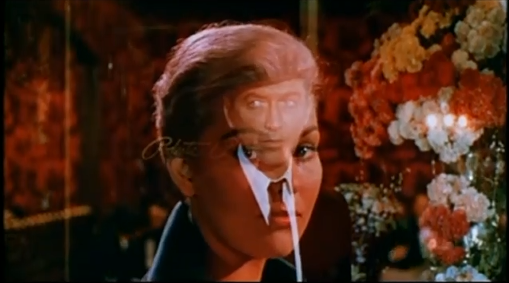Hitchcock's Vertigo Film: An Analysis of Fantasy and Reality in the Movie
Alfred Hitchcock’s ‘Vertigo’ explores the complexities of the line between fantasy and reality through the lack of reality in the film, which stems from film techniques used, the confusion the audience is made to feel throughout the movie and the actions of the characters. The entire film is built around characters attempting to create illusions and manipulate the other characters, resulting in a whirlwind of uncertainty and difficulty in establishing what is real from what is not. His use of twisted character profiles and confusing double names emphasises the sense of artificiality in the film. Visual themes such as mirrors and frames also contribute to the illusion.
The actions of many of the characters are intended to deceive other characters, and occasionally deceive the audience of the film too, resulting in the audience not knowing what in the movie is real, and what is not real. Throughout the film, characters create illusions and manipulate each other. Elster creates the illusion of Judy as his wife to manipulate John to be the unwitting witness to a “suicide”, but not able to stop it due to his vertigo. In this aspect, John was nothing but a puppet, with his moves anticipated by Elster who used him for financial gain. Judy manipulated John (and the audience) into believing that she was having a spiritual connection with Carlotta Valdes. John controlled Judy by trying to make her into Madeleine, and John created the illusion of himself as a romantic hero, desperately clinging onto it throughout the movie. These illusions and manipulations create a vertiginous whirlwind of confusion for the audience of the movie, because throughout the movie the plot is constantly twisting as more truth is exposed. This creates an atmosphere of uncertainty between what is real and what was just made up by the characters. In the last scene of the movie in the bell tower, it is shown that some of what was made up by the characters has become real, blurring the line between reality and fiction as Judy tells John, “I let you change me because I loved you”. She then attempts to recreate John’s illusion of him as the romantic hero to go back to the love that they previously shared when she was Madeleine. She does this by begging John to protect her, and by looking up at him and acting like the damsel in distress as she had during the scene where they were at the seaside where they had their first kiss.



When John reveals that he knows he was tricked by her with the line, “the necklace, Madeleine, that was your mistake,”, it is clear that for him the fantasy has become part-reality, because even though he knows he was tricked by her, he still refers to her as Madeleine, a character she played. In this scene, Madeleine’s meticulous bun becomes unravelled as the illusion is unravelled and the truth is revealed. The smothering kiss John gives Judy seems to be a desperate attempt to smother the real Judy and smother reality. John is so fanatical in creating his work of art he does not realize he is smothering the life out of Judy. However, in the end Madeleine/Judy dies because she has been so warped to his will that it is almost as if she has become entirely a fictional character.
Through confusing names and clever film techniques, an atmosphere of artificiality is established. Both of the film’s main actors respond to more than one name in the film, with Kim Novak playing both Judy and “Madeleine”, and James Stewart responding to both Scottie and John. This leads to an uncertainty of the identity of the characters and detracts from the legitimacy of them because of it. This is especially evident in the final scene of the movie taking place in the tower, in which John/Scottie says, “I loved you Maddy”, which could be interpreted as a mix between the names Judy and Madeleine. His use of the name Maddy shows his state of mind at the time of the final scene as he is not fully capable of distinguishing between the two women, even though he knows that one of them was never real. Throughout the movie, Madeleine wears a single grey outfit that shows little personality, almost as if she is a doll or a puppet, which leads to a sense of artificiality about her. John’s apartment also shows a lack of personality and is muted of colour, cold and sterile. Film techniques are used constantly throughout the movie to convey the lack of reality, such as the use of mirrors and frames, like doorframes and window frames that imply picture frames. These show a lack of reality because both are ways of looking at a representation of an object, not the object itself. Examples of use include the real Madeleine’s body being thrown from the bell tower, which Scotty views through a window frame. The fact he views it through a window frame suggests the lack of reality in the scene. Another example is when he is helping Judy to put on her necklace, and he looks at her in the mirror instead of directly at her. However, when he notices the particular necklace it is (Carlotta’s), he looks directly at her, as if he is seeing her as what she truly is for the first time. Of course, as the plot continues he feels he must push her back into the role of Madeleine and begins viewing her through mirrors again, distorting the lines between fantasy and reality. John cannot possess a fake person, which is made dramatically clear as Judy falls out the window - her last frame. After Judy’s fall from the bell tower in the ending scene, John is in the frame of the window looking down, and deliberately steps out of the frame, almost as if he is determined to be real. This could be interpreted as him learning through the death of two women that he cannot create his perfect woman, because she would not be real, and that would always be a gap that divided them.








